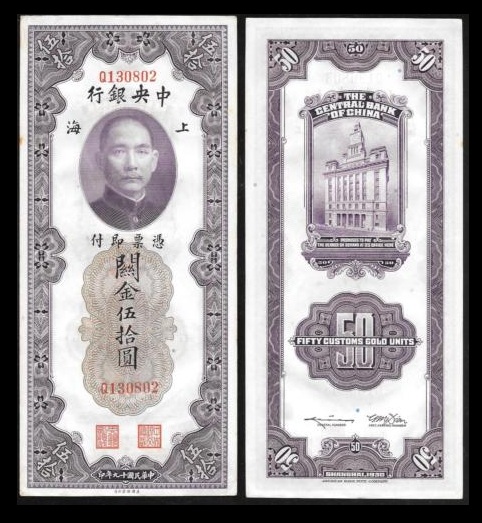Shanghai 1930 Gold Backed Currency
QUESTION: Mr. Armstrong, what were the gold custom units issued by the Bank of China with the image of Sun Yat-sen.
PHR
ANSWER: The Customs Gold Unit (CGU) was the first peg to the US dollar. Here we have China issuing currency backed by the US dollar. It was a currency issued by the Central Bank of China between 1930 and 1948. On May 1, 1930, the Central Bank of China put in circulation notes in denominations of 0.10, 0.20, 1, 5, and 10 Customs Gold Units. These notes were printed by American Bank Note Company and dated 1930. CGU notes were originally issued by the Central Bank of China for payment of import duties. These notes were backed by U.S. dollars until 1935. Once Roosevelt confiscated gold and devalued the dollar in 1934, this disrupted the “peg” that has been established with the dollar. So you see, the “peg” of the Hong Kong dollar to the US$ has an interesting historical background.
During and after WWII, the large-size CGU notes were issued for general circulation in China. The vertical face depicts Sun Yat-sen, who was the first president of the Republic of China. The reverse side features the Customs House in Shanghai, which was the commercial and financial hub of China. The Hong Kong dollar has a long history of being pegged. It was first established as a silver coin based upon the international unit of account which had been the Spanish 8 reals which everyone called a dollar. It was then pegged to the British pound, but after World War I, they eventually shifted and then pegged the currency to the US dollar.


